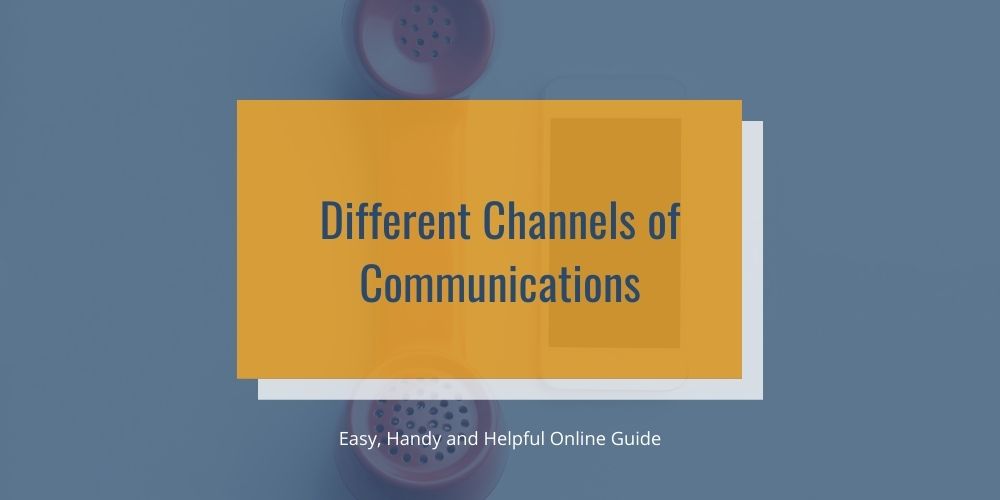
What is Communication?
Communication is the process of transfer of information from one person to another through communication. There are at least two persons involved in the process of communication, a sender and a receiver. The sender is the one who encodes the information and sends it to the receiver, which further decodes the message to receive the information. There are many mediums by which the information can be transmitted, which includes verbal communication, non-verbal communication, written communication, internet, media, FM radio, television, face-to-face communication, group chats, etc.
It is very important to establish proper communication to ensure smooth functioning in the business organization. As information flows from a variety of people, there are chances of information getting distorted. Information distortion takes place due to any of the circumstances like the wrong decoding of information by the receiver, sending wrong information, facial expressions, mood, tone, etc. affect the information.
There is a variety of definitions for communication, but one of the simplest definitions of communication is ‘sharing of information or message through various mediums of exchange to ensure it reaches more people in less time.
Different channels of communication
There are multiple channels of communication to ensure the information reaches many people in less time. Establishing communication is necessary to ensure the free flow of information for the smooth functioning of people in the organization. Communication makes the people in an organization keep moving. It keeps them updated about any upcoming changes or any other useful information.
One essential thing which is required while communicating is that whatever medium is being chosen for communication, it should be able to transfer the information effectively. Conveying information properly and appropriately is essential to avoid distortions.
There are various mediums by which communication is transmitted, which are known as ‘Communication channels.
Communication channels can further be classified into several categories, including:
- Face to face communication
- Video conferencing
- Telephonic Conversation
- Electronic Mail or email
- Letters or postcards
- Texting or SMS
- Media
- Blogs and Articles
- Visualizations like graphs and diagrams
Now let’s discuss them in detail one-by-one:
- Face to face communication: Face-to-face communication is the most effective and efficient type of communication form. In this type of communication, the sender and the receiver are standing face to face to each other, and the transmission of information is taking place. Also, there is less or minimal chance of information getting distorted because, in this form of communication, the information is being shared directly between the sender and the receiver. Face-to-face communication is established in-office meetings, which is known to be an effective form to avoid information distortions.
- Video conferencing: This is another medium of sharing information. Video conferencing is a good form of communication directly between the sender and the receiver, but it does not prove to be good at times when some important conversation is taking place, and in between, the signals get disconnected. In such situations, there are high chances for losses, as, during professional meetings, one cannot afford signal distortions.
- Telephonic Conversation: The telephonic conversation is another type of conversation taking place between the sender and the receiver directly without any mediator or middle person in between. In these types of conversations, the information is being passed on to the concerned person or receiver directly. The telephonic conversation is known to be an effective form of communication because, in this type of conversation, the chances of information distortion are not there. This type of conversation is an authentic form of conversation.
- Electronic Mail or Email: Nowadays, all professional conversations like job offers, proposals, and other types of professional conversations are held through electronic mail or email. This is an effective type of communication, but sometimes there are chances when the email has not reached the concerned person on time, or it is sent to the spam or junk folder, which leads to delays in conversations or communication. This is a good form of conversation, but if the network signals aren’t favorable, it might lead to delays in communication.
- Letters or postcards: Letters or postcards are those types of communication channels that used to be in effect in the earlier times when technology wasn’t there. As technological advancements are made, conveying the message through letters and postcards got lowered down. Now people prefer to convey via other forms of communication channels which proved to be much more effective and prompter.
- Texting or SMS: This is an information transmission type that was also used earlier but is still in use partially. With the advent of technology, people usually prefer to communicate through technology-generated applications which do not have any word limit and are prompt. Texting and SMS were used when there were no technological advancements.
- Media: Suppose the information is to be conveyed to a mass audience about something, then the transfer of information is done via Media. In this channel of communication, the media passes the information to a mass audience which is known to be the best way of communication. Mass communication is required when information such as announcements is to be made. There are political announcements, sports announcements and many other which are necessary to take care of.
- Blogging: Blogging conveys the feelings of the writer regarding something. Bloggers convey their feeling, opinions through blogs which is also known to be a good channel of communication.
- Visualizations: Whenever information regarding the statistical or pictorial representations is required, visualizations help.
Barriers to communication
There are so many communication barriers, including:
- Linguistic Barriers: Linguistic barriers are related to language; if the sender and the receiver of information do not know a mutual language, then the linguistic barriers arise.
- Cultural Barriers: Cultural barriers are related to food, dress, religions, etc., which arise from culture to culture.
- Attitude Barriers: Attitude barriers are those barriers that arise with introverts. When a person feels alone or left out, such barriers arise.
